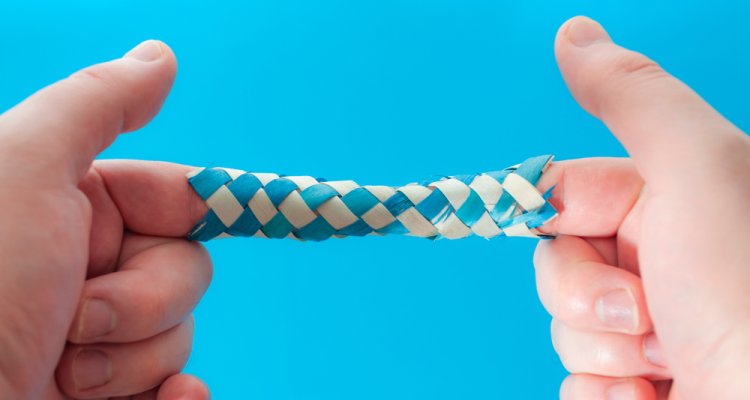
News
Bonds that strengthen under tension built in the lab for the first time
A material that does not break, but rather becomes stronger when you exert force on it. Counterintuitive, but Martijn van Galen succeeded in building such 'catch bonds' in the lab. He obtained his PhD on February 9 from the Physical Chemistry and Soft Matter chair group.
You may know them: colourful, braided finger traps. The harder you pull to free your fingers, the tighter their grip. A similar phenomenon occurs throughout nature; even our own cells adhere to each other through such mechanisms. Van Galen simulated these catch bonds on the computer and designed a synthetic variant in a lab for the first time. His catch bonds consist of two pieces of DNA, normally loosely attached to each other. Once force is applied, a reorganisation occurs, allowing the two to make more contact and thus strengthen their grip.
Self-reinforcing materials
The synthetic catch bonds are a first step towards self-reinforcing materials. However, Van Galen warns that there is still a long way to go. "My research is a proof of concept: it demonstrates that we can synthetically construct this remarkable property, which is widespread in nature." But more research is needed before we can actually implement this technology into materials. "For example, we won’t build bridges out of DNA; it is simply too weak." Additionally, DNA is sensitive to environmental influences such as temperature and UV radiation.
In the future, researchers may incorporate catch bonds into plastics. Like DNA, plastics consist of long chains. Recently, Wageningen scientists developed a new type of plastic that links the long chains together using physical forces. Perhaps this also allows for the incorporation of catch bonds to develop extra strong plastic.